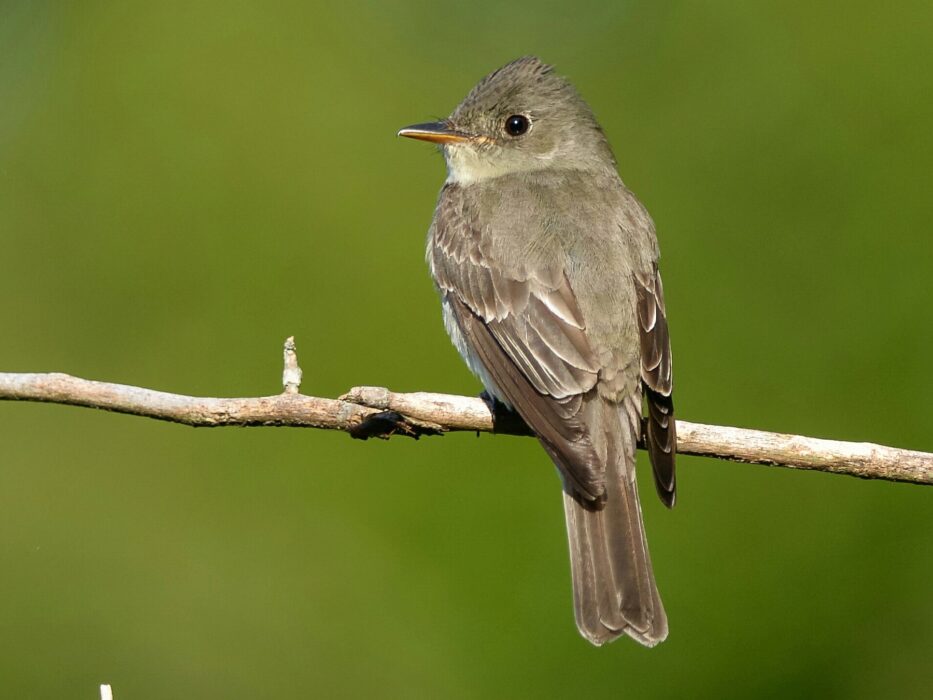
“Aerial Insectivores are flying animals that exclusively eat flying insects, while in flight,” said Lauren Jones, Wildlife and Stewardship Manager with the Six Nations Wildlife, Lands and Resources department. “Quite often that will be birds that do a lot of swooping actions and eat the insects in mid-air. It’s very cool and very fun to watch.”
Aerial insectivore populations across North America are all declining in numbers due to the widespread use of pesticides.
“This means that a lot of them are listed as either special concern, or threatened or endangered in some cases,” said Jones. Some species are listed as endangered due to habitat loss but in the case of aerial insectivores — populations across North America are all declining in numbers due to the widespread use of neonicotinoids in agricultural practices.
Neonicotinoid insecticides are a type of pesticides used in agriculture to protect crops from various insects, that have been under scrutiny for the impacts they are having on devastating the population of bees and other pollinating insects around the world.
Now — Six Nations Wildlife is launching a study in the community, working with Nature Canada, that would assess the population of aerial insectivores at Six Nations, note their habitats and numbers — and any other data that may help local ecologists protect the ecosystems that these birds, bats and insects support with their lives.
The study is looking at two different types of bats that are a species at risk, whipporwhils, barn swallows, chimney swifs and eastern wood peewees.
The Aerial Insectivores Study will take place simultaneously with an ongoing Ecological Land Classification study of the entire Six Nations Reserve already underway — looking at the vegetation, soil, wildlife and topography of the community.
Jones says that while there is data available on aerial insectivore populations around the Grand River watershed — there is limited information about the species found within Six Nations. Additionally, because of increasing habitat loss due to industry and development around all of Southern Ontario — Six Nations has become a refuge for a lot of the species-at-risk.
This, she says, makes it critical for Six Nations to take action to steward those habitats responsibly, document the species that are present on the territory and provide that information for community leaders, residents and business owners so they can take specific action to protect those habitats as well.
“The hope of the study is to be able to eventually quantify the threats to this population,” said Jones.
“There is data for all around Ontario that we can infer that some of it is here, but there is stuff that we found during the Ecological Land Classification study that, because we have all of this land and habitat and wonderful environments on reserve that isn’t anywhere else in Ontario anymore — a lot of the information isn’t transferrable. The common stuff for sure but there is stuff we can find on Six Nations that you just can’t find anywhere else,” said Jones.
During the ELC study, Jones says that researchers were fascinated with the number of some of the more rare aerial insectivores that are on Six Nations that are not found anywhere else in Ontario, including the Eastern Wood PeeWees. Jones said, “It almost sounds like it’s saying it’s own name when it does it’s call, and all of our researchers were shocked that they were hearing them so much when you don’t really hear them anywhere else.”
Funding for the study is coming from Climate Change and Environment Canada.
Funding has been confirmed for the first part of the study that will look at the historical abundance and importance of aerial insectivores within Six Nations. That means that the Wildlife office is looking for help from traditional knowledge keepers and community members who can share stories about swallows, bats, and species included in the study.
The Six Nations Wildlife Office says anyone who is interested in helping with the study — by speaking to researchers who will be surveying the community — can reach out through the departments Facebook page or by calling them directly at 519-445-0330 ext 5430.








